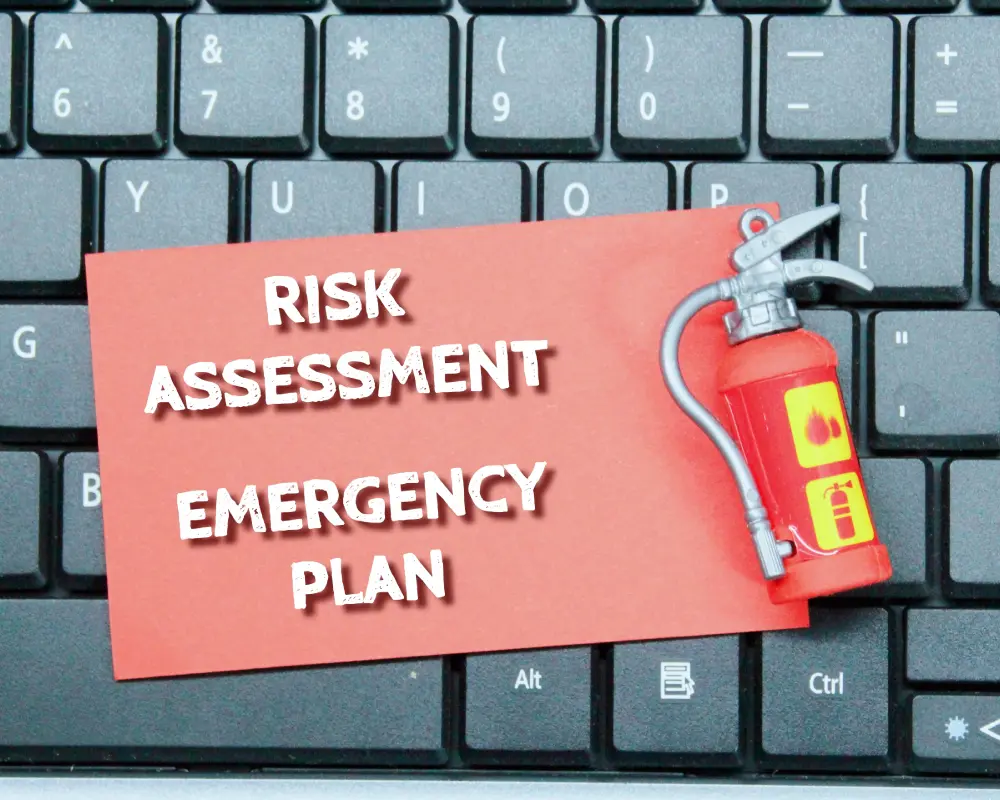
Fire risk assessment: How do you perform one?
Performing a fire risk assessment is a fundamental process in ensuring safety within any UK premises, whether it’s a workplace, public building, or residential property. This assessment is not just a legal obligation under the Regulatory Reform (Fire Safety) Order 2005 for non-domestic premises in England and Wales, but a critical step towards safeguarding lives and property. The process involves a systematic evaluation of the factors that determine the risk from fire, the chances of a fire starting, and the danger it poses to those in the premises. Here’s a detailed guide on how to conduct a fire risk assessment in the UK:
1. Identify Fire Hazards
The first step is to identify potential fire hazards within the premises. This includes sources of ignition (like electrical equipment, heating, and smoking materials), materials that can fuel a fire (such as paper, plastics, or chemicals), and oxygen sources (including natural air flow and medical or commercial oxygen supplies).
2. Determine Who is at Risk
Identify who is at risk in the event of a fire. This includes employees, visitors, and any people particularly at risk, such as individuals with mobility issues, the elderly, children, or those working with dangerous substances. Consideration must be given to people who may be in and around the premises.
3. Evaluate, Remove, Reduce, and Protect from Risk
Evaluate the risk of a fire starting and the risk to people from fire. Look for ways to remove or reduce fire hazards (e.g., safe storage of flammable materials) and risks to people (e.g., ensuring clear escape routes and exits). Implement measures to protect people by providing appropriate fire detection and alarm systems, fire-fighting equipment, and training for occupants on what to do in the event of a fire.
4. Record, Plan, Inform, Instruct, and Train
Record the findings of your assessment and the actions taken. Develop an emergency fire evacuation plan detailing any necessary actions and responsibilities. Inform and instruct relevant people of the risks identified and the measures in place to ensure safety. Provide training for all occupants on emergency procedures, use of fire-fighting equipment, and how to safely evacuate the premises.

5. Review and Update the Fire Risk Assessment Regularly
The fire risk assessment is not a one-time task. It should be reviewed regularly and updated whenever significant changes to the premises occur, such as alterations to the building, changes in occupancy, or updates to fire safety equipment. This ensures that the assessment remains relevant and that safety measures are effective.
Detailed Considerations
Escape Routes: Ensure there are enough safe and accessible escape routes for everyone to exit the premises quickly. Check that fire doors are in good working order and escape routes are clearly marked and free from obstruction.
Fire Detection and Warning Systems: Assess the adequacy of existing fire detection systems. They should be suitable for the type of building and its occupancy, ensuring early detection and warning.
Fire Fighting Equipment: Evaluate the availability and suitability of fire-fighting equipment, such as extinguishers, blankets, and hose reels. These should be accessible and suitable for the types of fires that could occur.
Training and Drills: Regular fire safety training and drills are crucial for ensuring everyone knows how to react in an emergency. This includes training on how to use fire-fighting equipment, evacuate the building safely, and understand fire safety procedures.
Special Considerations for Vulnerable People: Plans should include provisions for assisting vulnerable individuals during an evacuation. Personal Emergency Evacuation Plans (PEEPs) may be necessary for some occupants.
External Emergency Services: Consideration should also be given to access for the Fire and Rescue Services, ensuring they can quickly and safely reach and enter the premises in the event of a fire.
By meticulously following these steps and regularly reviewing and updating the fire risk assessment, property owners and managers can ensure they not only comply with UK fire safety legislation but more importantly, provide a safe environment for all occupants. It’s a comprehensive approach that demands attention to detail and an ongoing commitment to fire safety management.
Follow us on Facebook and LinkedIn, or read more posts here.